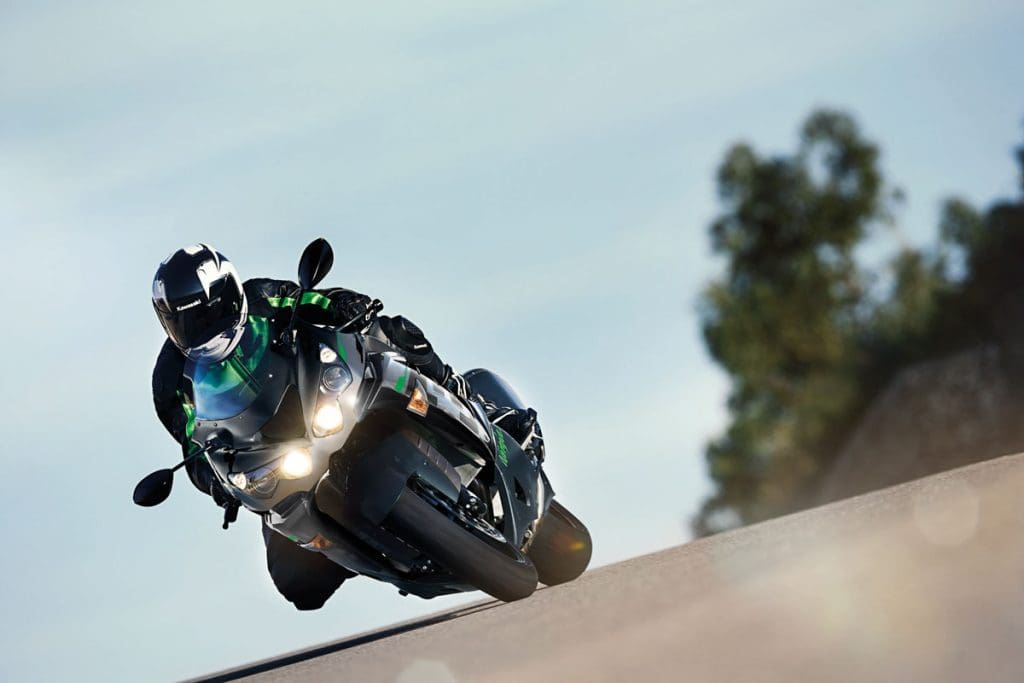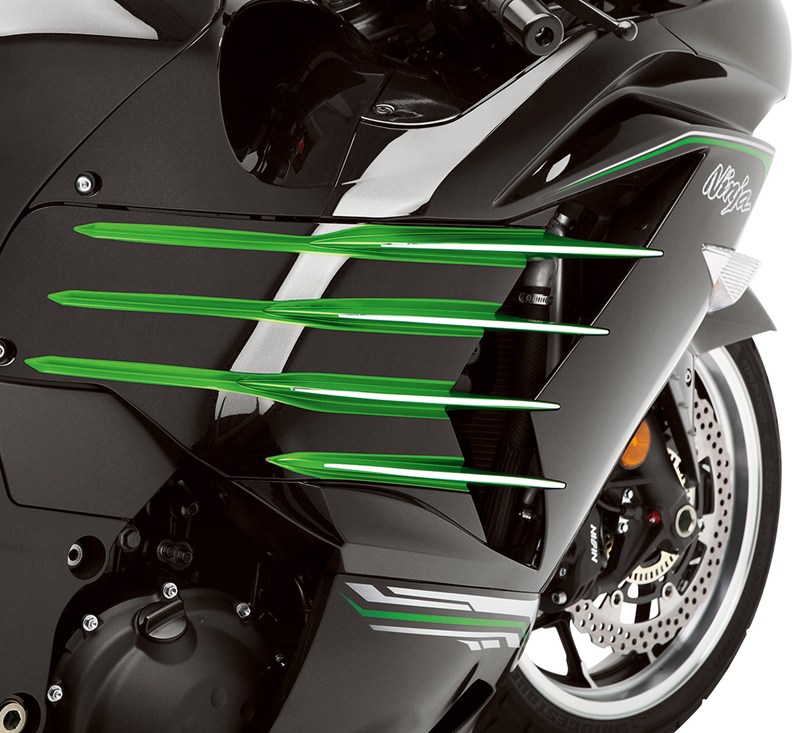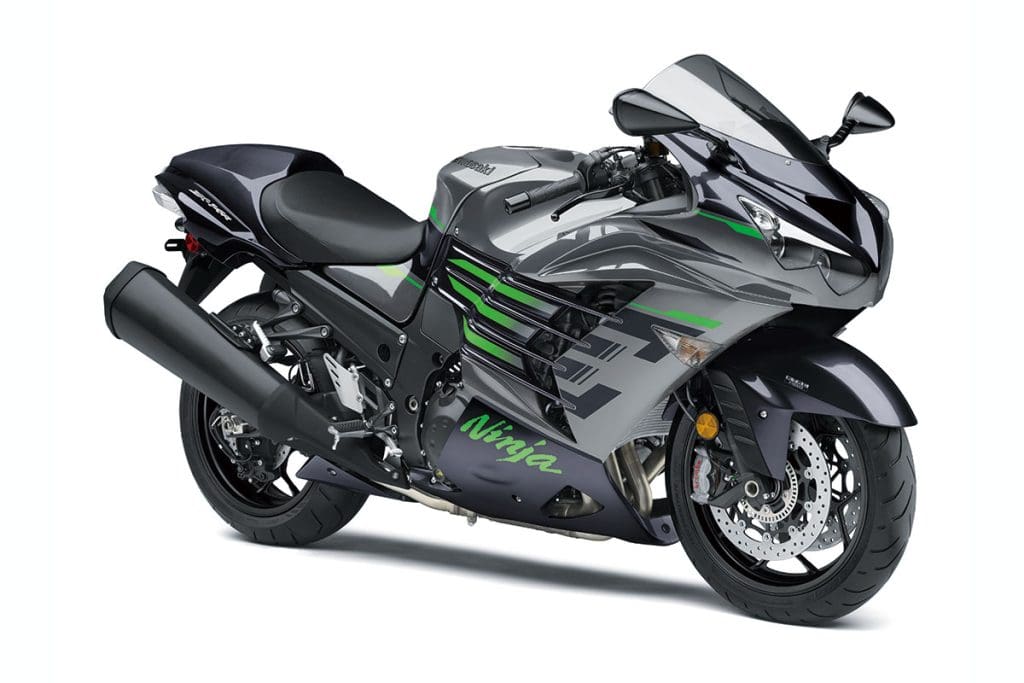Kawasaki 14r Price
The 2021 Kawasaki Ninja ZX-14R: Farewell To The King Of Speed?
Contents
- Model Overview
- Specifications
- Features
- Photos
- Videos
- Links
The 2021 Kawasaki Ninja ZX-14R might just be the final performance from Kawasaki Motorcycle's King of Speed. Not able to meet Euro 5 compliance in the current form the beloved Japanese-made legend has not had any appreciable updates since 2012. The 2021 Kawasaki lineup includes the H2 SX+ SE, which is capable of meeting or exceeding the standards set by the ZX-14R, albeit at a higher price, it is hard not to see how it is being groomed to fill the slot of the ZX-14R
Price in many ways is why the ZX-14R is still worth your attention. For comparatively low dollars you get 1441cc's of crazy power, over 200 hp, and 110lb of torque, which shoves you forward as if smacked by Godzilla. The power builds down low and seems to never stop, you will run out of road and/or courage before the ZX-14R runs out of thrust.
Equipped with ABS, traction control, selectable power modes, the ZX-14R has what you need for a fantastic ride, Bluetooth won't make you go faster.
Perhaps the most impressive feature? Comfort! A bike with this history of ¼ mile greatness, and top speed superiority, doesn't usually build expectations of comfort. Yet rider after rider comments at just how well the bike fits and feels. Making it still, an amazing choice for very sporty touring.
Color for 2021 include: Pearl Storm Gray / Metallic Diablo Black
The 2021 Kawasaki Ninja ZX-14R starts at $15,199 USD / $18,099 CAD.
On this page: we've curated specs, features, news, photos/videos, etc. so you can read up on the new 2021 Kawasaki Ninja ZX-14R in one place.

Model Overview
General Info
- Price: $15,199 USD / $18,099 CAN
- Key Features:
-
- Dual power modes
- Back-torque limiting Slipper clutch
- 3-mode Kawasaki Traction Control (KTRC)
- Stainless steel braided clutch and brake lines
- Brembo® 4-piston M50 monobloc calipers
- Large 310mm Brembo® floating front discs
Main Specs
- Engine: 1441cc, 4-stroke, In-Line Four, DOHC, 16-valve, liquid-cooled
- Power: 155.0 kW (207.9 hp) @ 9,800 RPM
- Torque: 153.5 N⋅m (113.2 lb⋅ft) @ 7,800 RPM
- Wet Weight: 269 kg (593.1 lb)
- Seat Height: 800 mm (31.5 in)

2021 Kawasaki Ninja ZX-14R Specifications
From Kawasaki
ENGINE | ||
| Engine | 1441cc, 4-stroke, In-Line Four, DOHC, 16-valve, liquid-cooled | |
| Power | 207.9 hp | |
| Bore x Stroke | 84.0 x 65.0 mm | |
| Compression Ratio | 12.3:1 | |
| Fuel System | Fuel injection: ø44 mm x 4 with dual throttle valves | |
| Starter | Electric | |
| Lubrication | Forced lubrication, wet sump with oil cooler | |
DRIVETRAIN | ||
| Clutch | Wet multi-disc, manual | |
| Transmission | 6-speed, return | |
| Final Drive | Chain | |
CHASSIS | ||
| Suspension Front | ø43 mm inverted fork with compression and rebound damping and spring preload adjustability, and top-out springs / 117 mm (4.6 in) | |
| Suspension Rear | Bottom-Link Uni Trak, gas-charged shock with compression and rebound damping and spring preload adjustability / 124 mm (4.9 in) | |
| Brakes Front | Dual semi-floating ø310 mm Brembo discs with radial-mount, Brembo M50 monobloc, opposed 4-piston calipers | |
| Brakes Rear | ø250 mm disc with opposed 2-piston caliper | |
| Tires Front | 120/70ZR17M/C (58W) | |
| Tires Rear | 190/50ZR17M/C (73W) | |
| Fuel Tank Capacity | 22 litres | |
| Color | Pearl Storm Gray / Metallic Diablo Black | |
ELECTRICAL | ||
| Ignition | Digital | |
| Spark Plugs | ||
| Headlight | LED | |
| Tail Light | LED | |
DIMENSIONS | ||
| Overall Length | 85.4 in | |
| Overall Width | 30.3 in | |
| Overall Height | 46.1 in | |
| Wheelbase | 1,480 mm (58.3 in) | |
| Ground Clearance | 125 mm (4.9 in) | |
| Seat Height | 800 mm (31.5 in) | |
| Curb Weight | 269 kg (593 lb) | |
WARRANTY | ||
| Warranty | 12 months | |
| Kawasaki Protection Plus | 12 / 24 / 36 / 48 months | |

2021 Kawasaki Ninja ZX-14R Features
Late-model sport bikes often use large-bore throttle bodies to generate high levels of power. However, with large diameter throttles, when a rider suddenly opens the throttle, the unrestricted torque response can be strong. Dual throttle valve technology was designed to tame engine response while contributing to performance.
On models with dual throttle valves, there are two throttle valves per cylinder: in addition to the main valves, which are physically linked to the throttle grip and controlled by the rider, a second set of valves, opened and closed by the ECU, precisely regulates intake airflow to ensure a natural, linear response. With the air passing through the throttle bodies becoming smoother, combustion efficiency is improved and power is increased.
Models equipped with multiple Power Modes offer riders an easily selectable choice of engine power delivery to suit riding conditions or preference. In addition to Full Power mode, one (Low) or two (Middle, Low) alternate mode(s) in which maximum power is limited and throttle response is milder are provided.
Using high-precision electronic control for engine management, Kawasaki models can achieve a high level of fuel efficiency. However, fuel consumption is greatly affected by throttle use, gear selection, and other elements under the rider's control. The Economical Riding Indicator is a function that indicates when current riding conditions are consuming a low amount of fuel. The system continuously monitors fuel consumption, regardless of vehicle speed, engine speed, throttle position and other riding conditions. When fuel consumption is low for a given speed (i.e. fuel efficiency is high), an "ECO" mark appears on the instrument panel's LCD screen. By riding so that the "ECO" mark remains on, fuel consumption can be reduced.
While effective vehicle speed and engine speed may vary by model, paying attention to conditions that cause the "ECO" mark to appear can help riders improve their fuel efficiency – a handy way to increase cruising range. Further, keeping fuel consumption low also helps minimize negative impact on the environment.
KTRC, Kawasaki's advanced traction control system provides both enhanced sport riding performance and the peace of mind to negotiate slippery surfaces with confidence. Multiple rider-selectable modes (the number of modes varies by model) offer progressively greater levels of intrusion to suit the riding situation and rider preference.
Less intrusive modes maintain optimum traction during cornering. Designed with sport riding in mind, they facilitate acceleration out of corners by maximizing forward drive from the rear wheel. And because Kawasaki's sophisticated software bases its dynamic analysis on the chassis' orientation relative to the track surface (rather than relative to a horizontal plane), it is able to take into account corner camber, gradient, etc., and adapt accordingly.
In the more intrusive modes (and for some models, in any mode), when excessive wheel spin is detected, engine output is reduced to allow grip to be regained, effectively enabling riders to negotiate both short, slippery patches (train tracks or manhole covers) and extended stretches of bad roads (wet pavement, cobblestone, gravel) with confidence.
Models equipped with IMU incorporate chassis-orientation feedback to offer even more precise management.
Models equipped with multiple Power Modes offer riders an easily selectable choice of engine power delivery to suit riding conditions or preference. In addition to Full Power mode, one (Low) or two (Middle, Low) alternate mode(s) in which maximum power is limited and throttle response is milder are provided.
Models equipped with multiple Power Modes offer riders an easily selectable choice of engine power delivery to suit riding conditions or preference. In addition to Full Power mode, one (Low) or two (Middle, Low) alternate mode(s) in which maximum power is limited and throttle response is milder are provided.
Kawasaki ABS systems use front and rear wheel sensors to constantly monitor wheel speed. Should information from either of the sensors indicate that wheel lock has occurred, the ABS ECU directs the pump in the ABS unit to modulate brake fluid pressure (releasing and reapplying pressure so that traction can be regained) until normal operation resumes. ABS offers rider reassurance that contributes to greater riding enjoyment.
Kawasaki's monocoque frame is a hollow composite of aluminum parts. Originally conceived by Kawasaki engineers, it uses the engine as a fixed member so that chassis rigidity is formed not only by the frame, but the combination of the frame and engine together. Joining the engine and front and rear suspension units, the hollow box-style frame envelops the engine from above. In addition to being made from lightweight materials, its main section also acts as the air cleaner box and battery box, enabling parts to be reduced for even greater weight savings. Further, because the frame does not run beneath or alongside the engine, the chassis can be made very compact. Especially on large-displacement models, the slim chassis design of the aluminum monocoque frame contributes to ease of riding.
The aluminum monocoque frame was originally developed by Kawasaki in the 1980s for their World Grand Prix works racer. In an era where steel pipe frames were the norm, the aluminum monocoque frame that debuted on the KR500 took the world by surprise. First featured on a mass-production model on the 2000 Ninja® ZX™-12R, this original Kawasaki technology has evolved and can be found on some of our large-displacement flagship models.
2021 Kawasaki Ninja ZX-14R Photos
2021 Kawasaki Ninja ZX-14R Videos
Links
Source: https://www.webbikeworld.com/2021-kawasaki-ninja-zx-14r/







Tidak ada komentar:
Posting Komentar